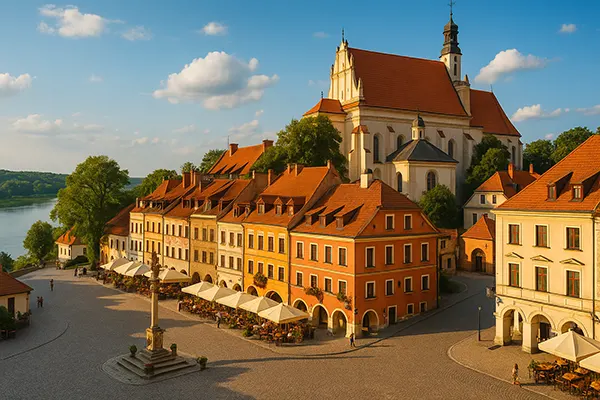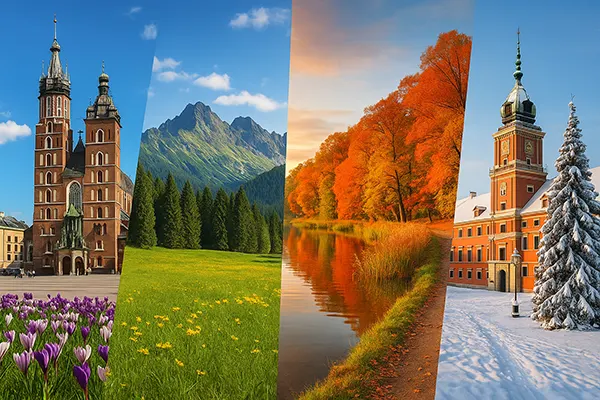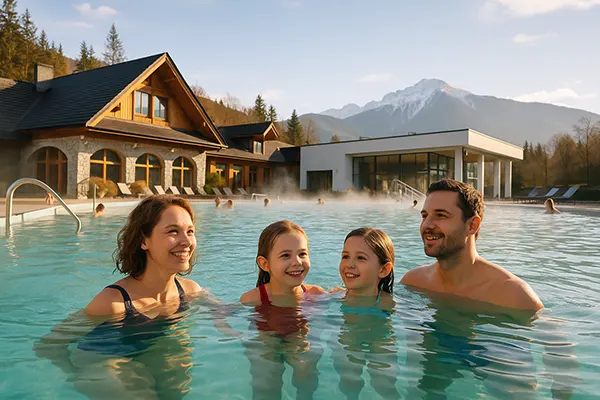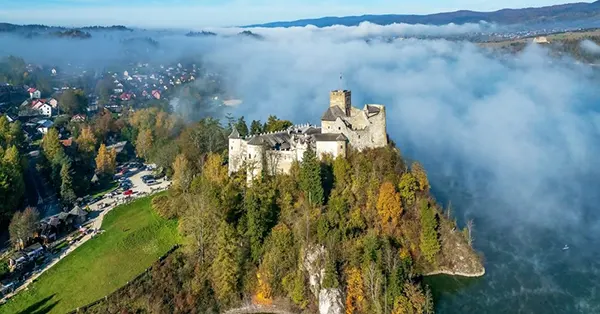
Jezioro Czorsztyn and the Village of Czorsztyn — Pieniny Mountains, Castle, and Reservoir
Situated in the heart of southern Poland, Jezioro Czorsztyn and the nearby village of Czorsztyn form one of the region’s most picturesque and historically rich destinations. Nestled between the rolling peaks of the Pieniny mountain range, this location offers a perfect combination of natural beauty, cultural heritage, and outdoor recreation. With its calm reservoir waters, medieval castle ruins, and easy access to hiking routes, Czorsztyn is an appealing alternative to Poland’s busier mountain resorts.
The Landscape and the Lake
Jezioro Czorsztyn, or the Czorsztyn Lake, is an artificial reservoir created in the 1990s on the Dunajec River. The lake was formed to prevent floods and generate hydroelectric power, yet it quickly became one of the most scenic places in the Pieniny region. Its shimmering surface reflects the nearby peaks and provides an idyllic setting for sailing, kayaking, and fishing.
On one side of the lake lies the small village of Czorsztyn, while across the water stands Niedzica, home to another famous fortress, Niedzica Castle. The visual contrast between these two medieval strongholds creates one of Poland’s most recognisable panoramas. The surrounding hills and dense forests make the area perfect for leisurely walks or demanding hikes.
During the warmer months, Jezioro Czorsztyn becomes a hub for families and travellers looking for peace and fresh air. Swimming zones and boat rentals operate near the shore, and visitors can explore several scenic viewpoints, such as Wdżar Hill or the nearby Three Crowns peak, which provides breathtaking views of both castles and the reservoir.
Walking Trails and Outdoor Adventures
The Pieniny Mountains are famous for their well-marked hiking paths that offer varied levels of difficulty. From Czorsztyn, travellers can follow the red trail leading to Trzy Korony (Three Crowns) or Sokolica, two of the most iconic summits in the region. These routes are ideal for experienced hikers and photographers alike, thanks to their panoramic views of the Dunajec Gorge and the Tatra Mountains in the distance.
For cycling enthusiasts, a route around Jezioro Czorsztyn offers an engaging way to explore the area. The 38-kilometre trail connects Czorsztyn and Niedzica, crossing the impressive dam and passing through meadows, forests, and small rural settlements. The route is suitable for both mountain and electric bikes, with resting points and local food stalls along the way.
Those who prefer a slower pace can enjoy a boat cruise or rent a kayak to explore hidden coves. The water of Jezioro Czorsztyn is clean and calm, making it ideal for recreational paddling. Many visitors also take the ferry between Czorsztyn and Niedzica, which operates throughout the summer season.
The Historic Ruins of Czorsztyn Castle
Standing proudly on a rocky hill above the lake, Czorsztyn Castle dates back to the 14th century. Originally built as a defensive stronghold against Hungarian invasions, it has witnessed centuries of political and military events. Today, the castle is a well-preserved ruin open to visitors, offering not only a glimpse into medieval architecture but also sweeping views across the reservoir and mountains.
The ruins are maintained by the Pieniny National Park and feature an informative exhibition about the region’s history and the construction of the dam. Climbing to the top of the fortress rewards visitors with a panoramic view that beautifully captures the essence of southern Poland’s natural and cultural landscape.
Across the lake, Niedzica Castle provides an interesting contrast. Fully restored and furnished, it now functions as a museum dedicated to the history of the Dunajec Valley. The two castles, facing each other across the water, symbolise centuries of shared history between Poland and Slovakia.
Culture and Local Life
The village of Czorsztyn retains its authentic charm, with traditional wooden houses and small guesthouses welcoming visitors throughout the year. Local residents maintain customs and crafts that have been passed down through generations. Travellers can find handmade souvenirs, local cheeses, and smoked trout — a regional delicacy served in nearby inns.
Every summer, small cultural events and folk concerts take place near the lake, celebrating the Pieniny’s vibrant traditions. The peaceful atmosphere contrasts with more commercial mountain resorts, allowing guests to experience the slower rhythm of rural life while enjoying the scenery.
In winter, the area transforms into a quiet retreat. Although it is not a major ski resort, nearby Kluszkowce offers small ski slopes and equipment rentals, making Czorsztyn a good choice for families who prefer a tranquil setting over crowded tourist centres.
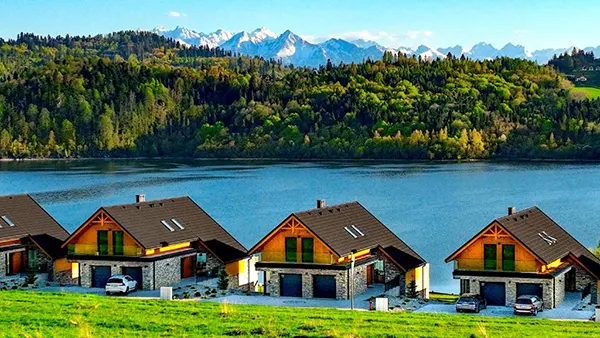
Accommodation and Seasonal Tips
Accommodation options in Czorsztyn range from cosy guesthouses and agritourism farms to boutique lodges overlooking the lake. Many properties feature wooden architecture and panoramic terraces, blending perfectly with the natural surroundings. During the summer, early booking is advised, as domestic tourism has been growing steadily in recent years.
Spring and autumn are ideal seasons for hiking and photography, with mild temperatures and colourful landscapes. In contrast, summer attracts those who wish to combine mountain air with water activities. Winter, on the other hand, offers snow-covered trails and an intimate atmosphere for visitors seeking peace and solitude.
To make the most of a trip to Jezioro Czorsztyn, travellers should plan at least two full days — one for exploring the castles and village, and another for hiking or water recreation. Public transport connects the area with Nowy Targ and Kraków, but many prefer travelling by car for greater flexibility.
Practical Information for Visitors
Entrance to Czorsztyn Castle costs around 10 PLN per adult as of 2025, with reduced fares for children and students. The ferry between Czorsztyn and Niedzica operates from April to October, depending on weather conditions. Boat and kayak rentals are available near the harbour, with prices starting at approximately 30 PLN per hour.
The region forms part of the Pieniny National Park, and visitors are encouraged to follow its environmental guidelines to help preserve the area’s natural beauty. Waste separation and respect for local fauna are strictly recommended. Maps and trail information can be obtained at the park’s visitor centre or online before arrival.
For dining, small restaurants and inns serve Polish mountain cuisine — from pierogi and oscypek cheese to soups made from local vegetables and smoked meats. A typical dinner for two costs around 100–120 PLN. Most establishments accept card payments, though it’s advisable to carry some cash for smaller purchases.

